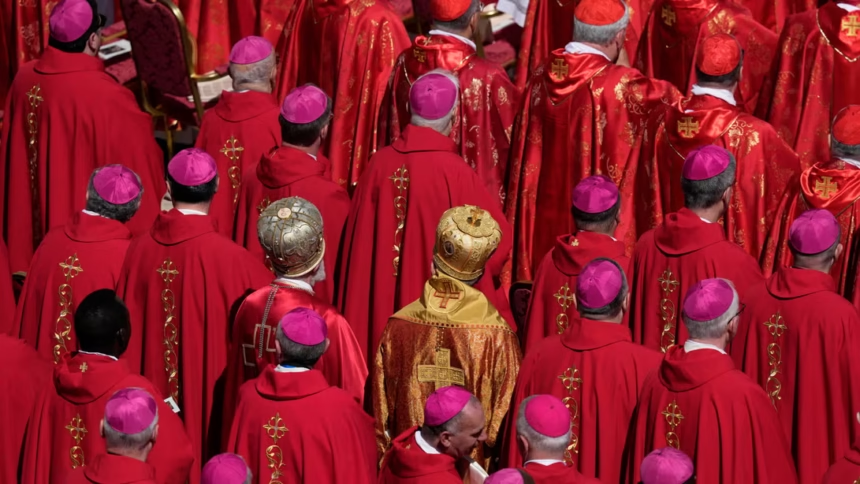All eyes are on the Vatican City on Wednesday, May 7, as a total of 133 cardinals converge to elect the 267th pope who will succeed Pope Francis, following his death on April 21 at the age of 88.
This event, known as the Papal Conclave, is rooted in centuries-old tradition, secrecy, and spiritual significance, as the Roman Catholic Church selects the 267th Pope to guide 1.4 billion Catholics worldwide.
Pan-Atlantic Kompass reports that this conclave features the largest number of electors ever, with 133 cardinals from across the globe.
Pope Francis appointed 108 of them, shaping a College of Cardinals that includes representation from regions like Africa, Asia, and Latin America, areas where Catholicism is expanding.
Europe still dominates with over 50 electors, led by Italy with 17, while the United States contributes 10.
This has set an intriguing stage for the election of the 267th Pope.
Below are 10 things to know about the papal conclave;
1). The Papal Conclave will begin with a morning Mass in St. Peter’s Basilica, followed by a procession of cardinal electors into the Sistine Chapel.
His Eminence Giovanni Battista Cardinal Re, Dean of the Sacred College of Cardinals, will celebrate Mass in St. Peter’s Basilica at 10am, Pro Eligendo Pontifice, for the election of the 267th Pope.
His sermon will set the tone for the Conclave as they elect the 267th Pope. However, he is not eligible to vote.
2). At 4:11pm, the Cardinal-Electors will gather in the Pauline Chapel of the Apostolic Palace, ahead of their procession to the Sistine Chapel.
At 4:30 pm, the Cardinal-Electors will proceed to the Sistine Chapel, led by the Litany of the Saints.
This solemn procession will mark a significant moment in the ceremony.
3). After the conclusion of the procession, proceedings will begin inside the Sistine Chapel.
4). The proceedings will be conducted by His Eminence Pietro Cardinal Parolin, the most senior Cardinal-Elector.
5). The Cardinals-Electors, one by one in order of precedence, starting with Cardinal Parolin and ending with His Eminence George Jacob Cardinal Koovakad, swear an oath of absolute secrecy on the Holy Gospels.
The cardinals, all under 80 years old as per the 1970 rule Ingravescentem Aetatem, will take an oath of secrecy, pledging to maintain silence about the proceedings for life.
6). After this, the Master of Pontifical Liturgical Celebrations, His Excellency Diego Giovanni Ravelli, proclaims “extra omnes” (Everyone else out!), and closes the doors to the Sistine Chapel.
7). With the doors of the Sistine Chapel closed, His Eminence Raniero Cardinal Cantalamessa will deliver a meditation to the Cardinals. This is another pivotal movement that could shape the duration and outcome of the Conclave.
After the conclusion of the proceedings, Cardinal Cantalamessa, who is not an elector, along with Archbishop Ravelli, will depart. Following their exit, the first round of voting for the 267th Pope will commence.
8). If no candidate receives the required 89 votes, more ballots will follow on Thursday, and subsequent days, four ballots a day, until white smoke emits from the chimney mounted on top of the Sistine Chapel.
9). When the 267th Pope has been elected, His Eminence Dominique François Joseph Cardinal Mamberti walks out to the balcony of St. Peter’s Basilica to joyfully announce “Habemus Papam”.
However, if Cardinal Mamberti is elected Pope himself, His Eminence Mario Cardinal Zenari will have the honour of announcing to the world the identity of the 267th Pope.
10). About 20 minutes later, the new Pope, dressed in white and in Papal regalia, appears on the balcony of St. Peter’s Basilica to give a few words and, more importantly, impart the Urbi et Orbi Blessing.




